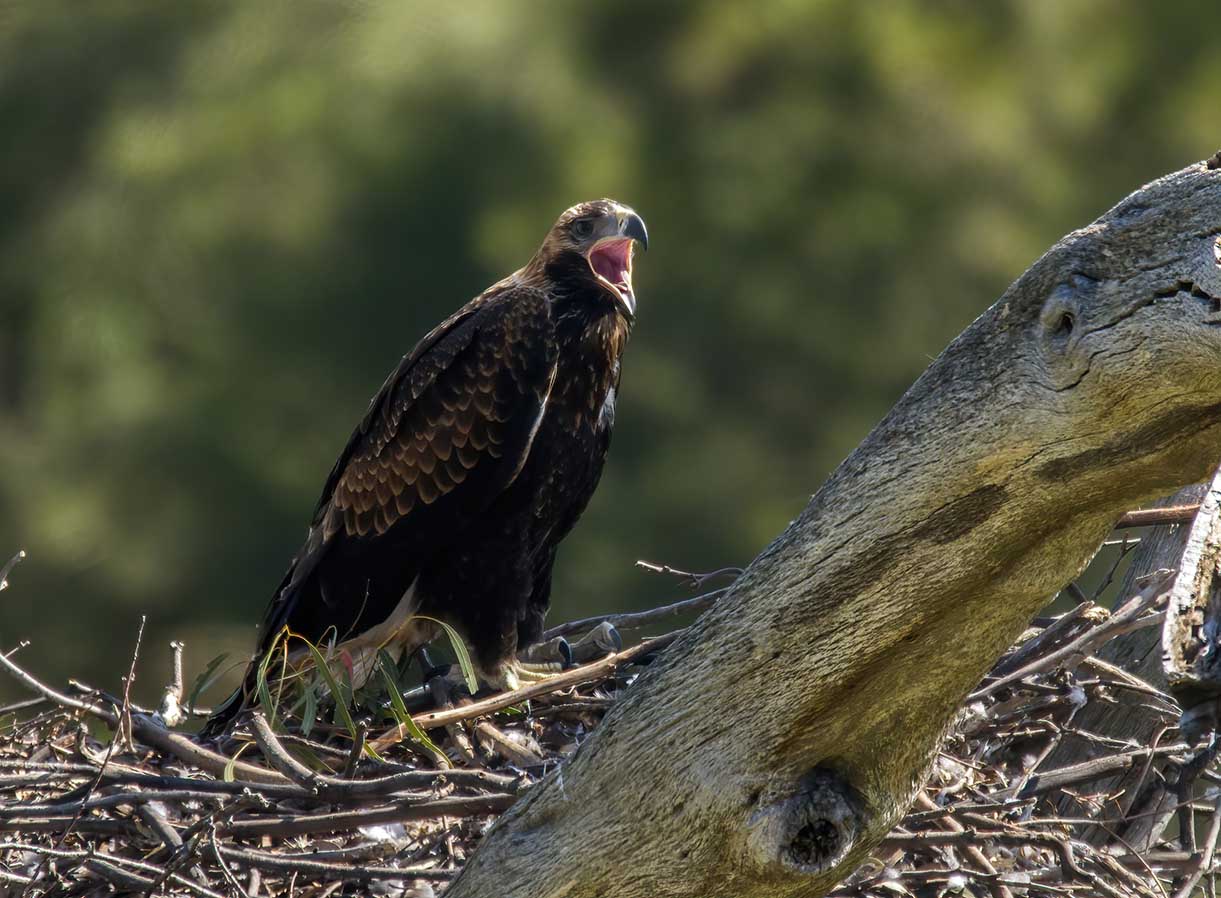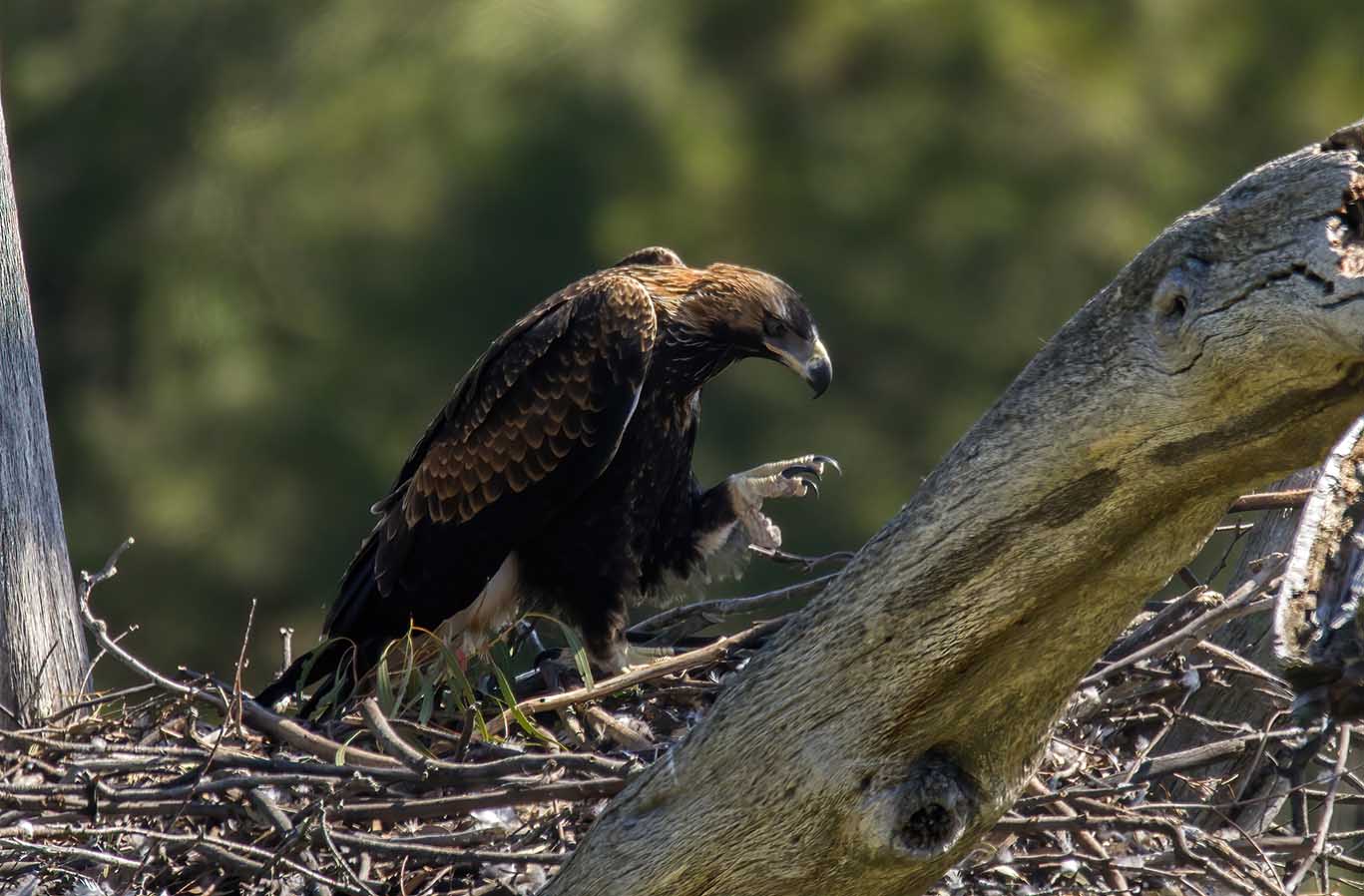emydura
Well-Known Member
Wedge-tailed Eagles - Aquila audax
The iconic Wedge-tailed Eagle is the largest bird of prey in Australia and the fourth largest eagle in the world. It is commonly found in Canberra and can often be seen soaring high in the thermals. It used to be heavily persecuted as farmers believed it would kill lambs, although it has been shown they mostly prey on dead or dying lambs. They are big carrion eaters and play a similar role as vultures in Australia. Prior to 1970, the government paid a bounty for the dead carcasses or eggs of Wedge-tailed eagles . As a result, hundreds of thousands of eagles were killed across Australia. Despite now being fully protected, Wedge-tailed Eagles are still regularly illegally killed. A Victorian father was jailed recently for poisoning more than 400 Wedge-tailed Eagles (Farm worker jailed for 14 days and fined for poisoning 406 wedge-tailed eaglesV). Despite all this, Wedge-tailed Eagles have bounced back well since protection and are considered the world's most abundant eagle. In fact, they are probably more common now than they have ever been and can be found in high numbers wherever the introduced rabbit is located.
There is a pair that have a nest not far from my house. Here are some photos of both the parents and the eaglet they raised this year.
Here are the parents perched in a tree not far from the nest. The larger female is on the bottom right. The feathers after each annual moult are a darker shade. These birds are basically black so they are quite old in age now.

A closeup of the female.

You can see why they are called Wedge-tailed Eagles. That wedge tail makes them very easy to distinguish from other birds of prey in flight.

Here is the eaglet after a couple of weeks. The eggs take about 45 days to hatch and the eaglet about 75 days to fledge. The eaglet stays with the parents for another 6 months before leaving the territory. The parents then have a month or two break before doing it all again. Wedge-tailed Eagles generally lay two eggs, although the second egg is often a plan B option in case there is a problem with the first egg. In some cases the stronger eaglet will kill the weaker one. But if there is plenty of food, then both chicks can fledge. I don't know what happened in this case.

The eaglet here is a little older. At this age the eaglet would always crouch down when I showed up making it hard to take good photos. The parents are not aggressive when you approach the nest. In fact, they fly off and observe you from a distance. Therefore, I would not stay too long. You can see a rabbit skin near the eaglets tail.

Lucky to get this photo of the eaglet standing up.

Here is one of the parents feeding a rabbit to the eaglet. I saw the parent fly over to the nest with the rabbit in its claws. Very exciting as that was the only time this occurred while I was watching.

Getting close to fledging.

Taken a week ago. Getting those wings ready to fly.

Here is a photo of the nest by the river. Wedge-tailed Eagles build a large stick nest often high up in a prominent tree. This nest is in a breath-taking location with a view right up and down the river.

I turned up today and there was no eaglet in the nest. As I approached the nest, the eaglet then flew from a nearby tree back to the nest. So I got to watch it fly. It must have only fledged in the last day or so. Hopefully over the next few months I will get to see all three of these eagles soaring in the sky together as I drive to work.

The iconic Wedge-tailed Eagle is the largest bird of prey in Australia and the fourth largest eagle in the world. It is commonly found in Canberra and can often be seen soaring high in the thermals. It used to be heavily persecuted as farmers believed it would kill lambs, although it has been shown they mostly prey on dead or dying lambs. They are big carrion eaters and play a similar role as vultures in Australia. Prior to 1970, the government paid a bounty for the dead carcasses or eggs of Wedge-tailed eagles . As a result, hundreds of thousands of eagles were killed across Australia. Despite now being fully protected, Wedge-tailed Eagles are still regularly illegally killed. A Victorian father was jailed recently for poisoning more than 400 Wedge-tailed Eagles (Farm worker jailed for 14 days and fined for poisoning 406 wedge-tailed eaglesV). Despite all this, Wedge-tailed Eagles have bounced back well since protection and are considered the world's most abundant eagle. In fact, they are probably more common now than they have ever been and can be found in high numbers wherever the introduced rabbit is located.
There is a pair that have a nest not far from my house. Here are some photos of both the parents and the eaglet they raised this year.
Here are the parents perched in a tree not far from the nest. The larger female is on the bottom right. The feathers after each annual moult are a darker shade. These birds are basically black so they are quite old in age now.

A closeup of the female.

You can see why they are called Wedge-tailed Eagles. That wedge tail makes them very easy to distinguish from other birds of prey in flight.

Here is the eaglet after a couple of weeks. The eggs take about 45 days to hatch and the eaglet about 75 days to fledge. The eaglet stays with the parents for another 6 months before leaving the territory. The parents then have a month or two break before doing it all again. Wedge-tailed Eagles generally lay two eggs, although the second egg is often a plan B option in case there is a problem with the first egg. In some cases the stronger eaglet will kill the weaker one. But if there is plenty of food, then both chicks can fledge. I don't know what happened in this case.

The eaglet here is a little older. At this age the eaglet would always crouch down when I showed up making it hard to take good photos. The parents are not aggressive when you approach the nest. In fact, they fly off and observe you from a distance. Therefore, I would not stay too long. You can see a rabbit skin near the eaglets tail.

Lucky to get this photo of the eaglet standing up.

Here is one of the parents feeding a rabbit to the eaglet. I saw the parent fly over to the nest with the rabbit in its claws. Very exciting as that was the only time this occurred while I was watching.

Getting close to fledging.

Taken a week ago. Getting those wings ready to fly.

Here is a photo of the nest by the river. Wedge-tailed Eagles build a large stick nest often high up in a prominent tree. This nest is in a breath-taking location with a view right up and down the river.

I turned up today and there was no eaglet in the nest. As I approached the nest, the eaglet then flew from a nearby tree back to the nest. So I got to watch it fly. It must have only fledged in the last day or so. Hopefully over the next few months I will get to see all three of these eagles soaring in the sky together as I drive to work.

Last edited:












































